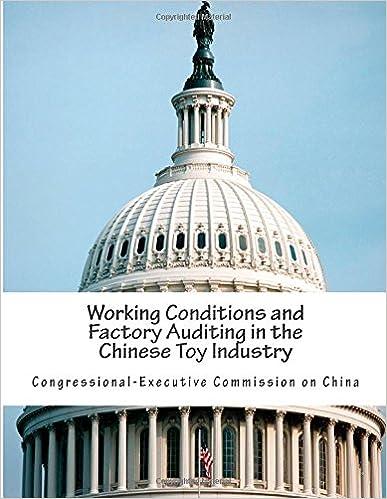Answered step by step
Verified Expert Solution
Question
1 Approved Answer
Question 1: Assume you expect a companys net income to remain stable at $2,000 for all future years, and you expect all earnings to be
Question 1:
Assume you expect a companys net income to remain stable at $2,000 for all future years, and you expect all earnings to be distributed to stockholders at the end of each year, so that common equity also remains stable for all future years (assumes clean surplus). Also, assume the companys = 1.5, the market risk premium is 6% and the 20-year yield on risk free treasury bonds is 2%. Finally, assume the company has 1,000 shares of common stock outstanding.
a. Use the CAPM to estimate the companys equity cost of capital.
b. Compute the expected net distributions to stockholders (dividends) for each future year.
c. Use the dividend discount (i.e., free cash flow to equity investors) valuation model to estimate the companys current stock price.
Question 2.
Use the same facts as in Q1 above, but assume you expect the companys income to be $2,000 in the coming year and to grow at the rate of 5% in every subsequent year into infinity. Also, assume that the companys common equity as of the end of the most recent fiscal year is $12,000, and the investment needed to support the growth in net income causes shareholders equity to increase by 5% each year. Assume the company is an all-equity firm; i.e., all financing comes from stockholders and none comes for debtholders. In this case, the companys balance sheet has net operating assets (NOA) of $12,000, shareholders equity of $12,000, and zero net financial obligations (ie zero net debt).
a. Compute dividends (or free cash flow to equityholders) for the coming year and the rate of growth in dividends for every year thereafter.
b. Use the dividend discount (i.e., free cash flow to equity investors) valuation model to estimate the companys current stock price.
1
Question 3.
Same facts as Q2 above, except the 5% income growth rate (and beginning of year common equity to support it) are only expected for years 2 and 3. Then growth is expected to be zero and all income is expected to be distributed to shareholders for all future years.
a. Compute the dividend payment for the next three year, and then dividends for all future years.
b. Use the dividend discount (i.e., free cash flow to equity investors) valuation model to estimate the companys current stock price.
Question 4.
Same facts as Q3 above, except the growth rates for income and beginning of year shareholders equity are 5% for years 2 and 3 and then 3% perpetually for all future years.
a. Compute dividends for the next three years and then growth in dividends for all future years.
b. Use the dividend discount (i.e., free cash flow to equity investors) valuation model to estimate the companys current stock price.
Question 5.
Same facts as Q2 above, except derive the value of the company and the price per common share using the earnings-based valuation model.
a. Compute residual income (ie abnormal earnings) for the next three years, and verify that residual income is growing at a constant rate. What is that rate?
b. Use the residual income (abnormal earnings) model to derive the value of the firm and the price per common share. Compare your answer to the answer you got using the free cash flow to equity investors (dividend discount model) in Q2 above.
Question 6.
Same facts as Q4 above, except derive the value of the firm and the price per common share using the earnings-based valuation model.
2
a. Compute residual income for the next 5 years, and verify that residual income is growing at a constant rate after year 3. What is that rate?
b. Use the residual income (abnormal earnings) model to derive derive the value of the company and the price per common share. Compare your answer to the answer you got using the free cash flow to equity investors (dividend discount model) in (4) above.
c. Define the concept of residual income (abnormal earnings).
d. Explain why positive (negative) residual income in all future periods causes price-to-book ratios greater (less) than one.
See your computation of residual income in (a) above and notice the effect of positive and negative values added to the book value of common equity in the computation of value in (b) above.
In this example, what is the companys P/B ratio? Why is it greater or less than 1.0?
Step by Step Solution
There are 3 Steps involved in it
Step: 1

Get Instant Access to Expert-Tailored Solutions
See step-by-step solutions with expert insights and AI powered tools for academic success
Step: 2

Step: 3

Ace Your Homework with AI
Get the answers you need in no time with our AI-driven, step-by-step assistance
Get Started


